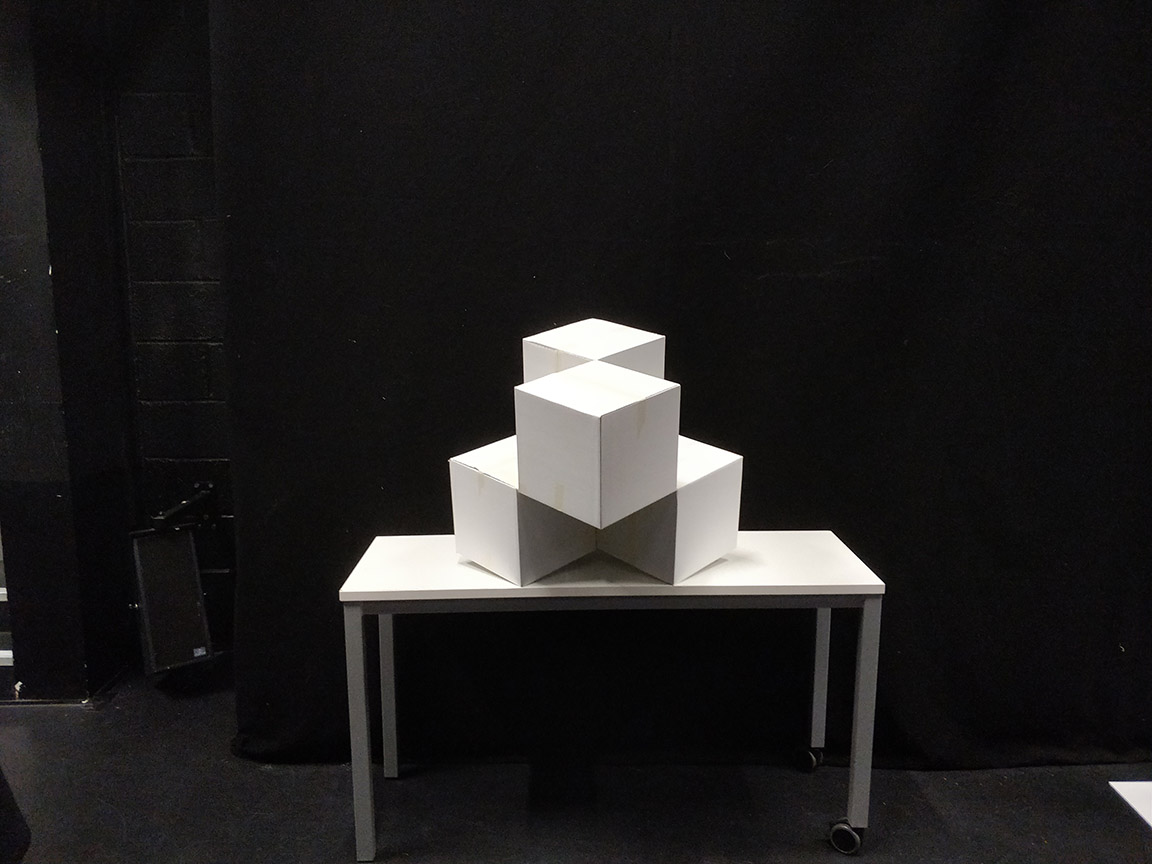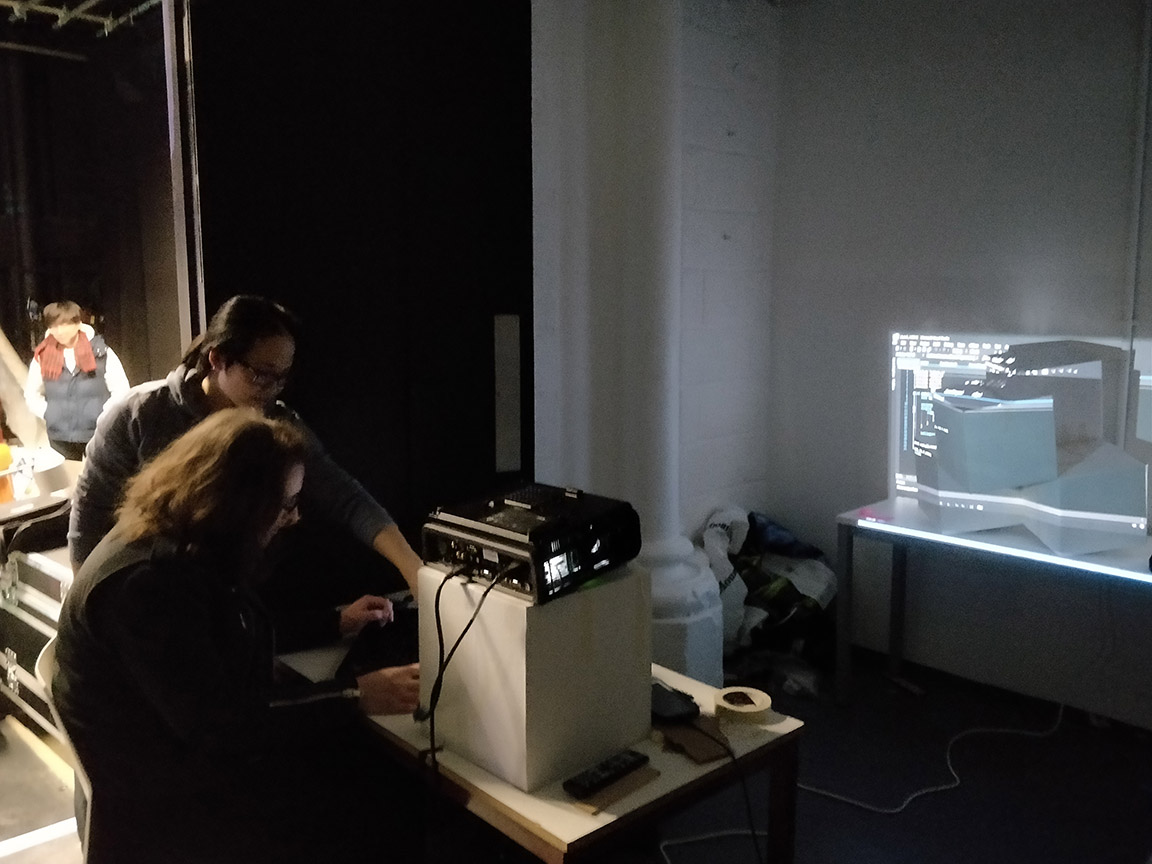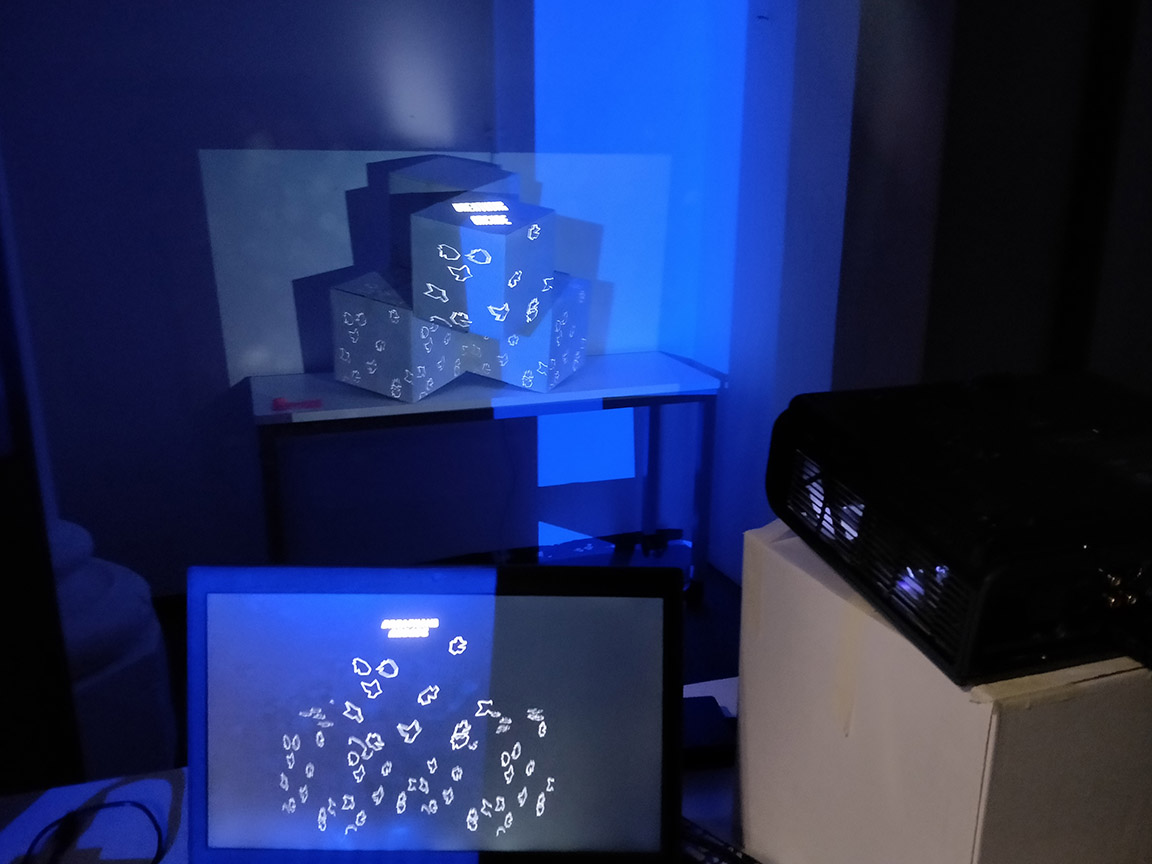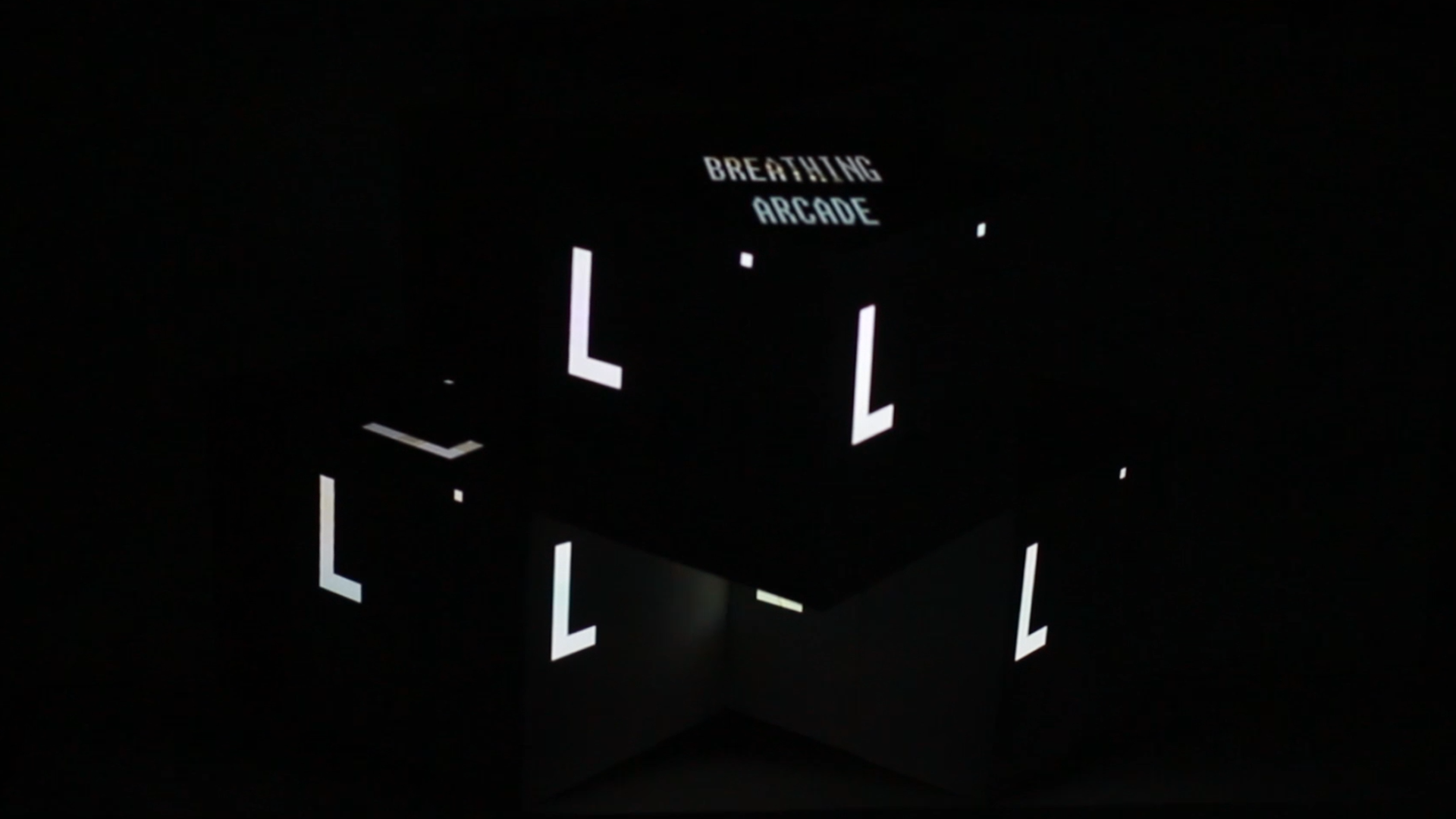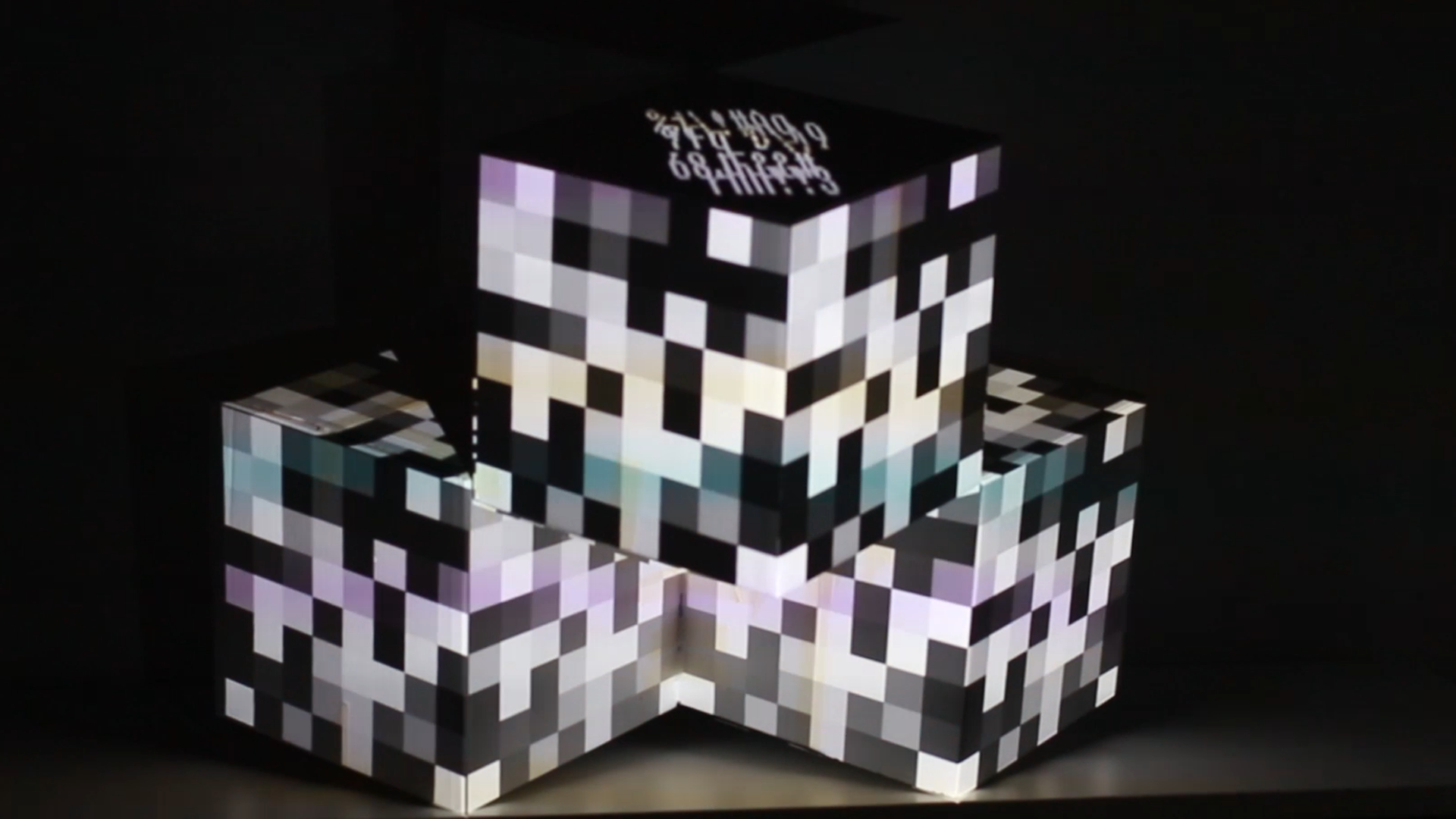Breathing Arcade
produced by: George Linfield
Introduction
Breathing Arcade is projection mapped 70s-inspired arcade that lives and breathes, evolving as time passes from basic black and white into colourful and graphical intensity. The piece represents the progression of arcade games from visual simplicity to bright incongruence, whilst the underlying gameplay remained largely the same.
Concept and background research
It was important to recognise my limitations as an artist before beginning work on this project. I have never been particularly good at imagining complex visuals, especially the kind that others have produced for their projections. As a writer more than a visual artist, I deal in structured rather than abstract form. Therefore I decided to work towards a theme that I was a) enthusiastic about and b) able to represent with code.
I settled on the early arcade games theme as I was interested by the idea that as the graphics of arcade games have evolved so dramatically over the last forty years, the core gameplay loops of classics such as Asteroids and Space Invaders are still fun to play. I wanted to represent this in my projection, by creating multiple animated artworks that first mirrored classic 70s arcade games, and then graphically evolved as the piece progressed.
I drew up a list of games that I wanted to use: Blockade, Pong, Space Invaders, Asteroids and Donkey Kong. In the end the only one I didn’t include in my final projection was Donkey Kong, although this was purely due to the three minute time limit. I then planned graphical evolutions for each game based on the original graphical theme of the games. For example, Asteroids would have a starfield effect.
Technical
From the outset I wanted my shape to be simple, but three dimensional rather than flat. I liked the idea of cubes as you could project onto the sides to create a depth that regular arcade cabinets didn’t have. We used Maya 3D to model our shape, and then built it out of cardboard. We wanted the shape to perch on the edge of a table, as if it we leaning forward, reaching out to the onlookers.
For the projection mapping I used the ofxPiMapper add-on, and I used Openframeworks for the code. I coded each scene separately, and then knitted them together as FBOs. I’d planned each scene to have three stages: firstly a simple representation of the game in white pixels, then an added layer of complexity, and finally the introduction of colour in the final stage. I programmed each scene so that it was easy to change the timings of each change at any point in the development process. This was important as I frequently changed when and for how long I wanted each scene to last. Every scene had a black background throughout, much like 70s arcade titles. In the end this worked really well in the pop-up space with dimmed lights, but unfortunately the projector seemed to lag at certain sections of the projection (the Asteroids starfield in particularly looked better on the screen than on the shape).
Future development
I would’ve liked to done more with the framing of the installation as an arcade cabinet. I was initially planning on adding animated controllers to better frame the cubes into an arcade cabinet, but ran out of time to implement it, so this is something I would like to add in future.
I also think the glitch transitions could be tightened up. On my laptop everything flowed together really nicely, however, after linking up my work with other members of my group, the glitch transitions between the two pieces stopped working smoothly. I had to remove all the movement of the ‘static screen’ effect to get them working again, and they still came across really jarring when projected.
Self evaluation
Overall I was pleased with how the piece came together. I succeeded in replicating the look and feel of old arcade games, and there was a consistency in this look between all four scenes. The evolving graphics retained this consistency, and I also feel like I managed to capture the right level of graphical intensity to fulfil my initial concept. I would’ve liked to have done a bit more with the transitions between the scenes, and I learnt enough from the process that I could certainly push my skillset further if I were to start again from scratch.
References
Graphics were inspired by the games Blockade (developed by Gremlin, 1976), Pong (Atari, 1972), Space Invaders (Taito, 1978) and Asteroids (Atari, 1979).
For the starfield effect in the Asteroids stage I followed this Processing tutorial by Daniel Shiffman and adapted this to Openframeworks.


































































